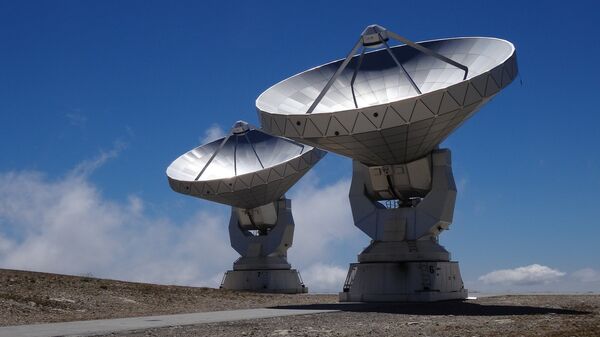A new study by an international team of scientists led by astronomers at the Canadian Hydrogen Intensity Mapping Experiment Fast Radio Burst Project (CHIME/FRB) in British Columbia has discovered that a mystery radio source in a galaxy some 500 million lightyears from our solar system is sending out fast radio bursts like clockwork in 16.35 day cycles, including 1-2 bursts per hour over a four day period and then 12 days of silence before starting up again.
The discovery is important, because out of the 150+ fast radio bursts recorded by Earth-based observatories over the last decade and a half, only ten of them have repeated, and none as steadily as the source discussed in the study. Furthermore, only a handful of them have been tracked back to the galaxy they came from.
The mystery signal, known as FRB 180916.J0158+65 was first discovered in 2017, but has continued repeating steadily, albeit at a rate some 600 times fainter than the first bright flare. In their study, scientists analysed 28 bursts which took place between September 2018 and October 2019, confirming the pattern, and excitedly concluding “that this is the first detected periodicity of any kind in an FRB source.”
The new FRB was tracked down to SDSS J015800.28+264253.0, a star-forming galaxy about 500 million light years from Earth.
“The discovery of a 16.35-day periodicity in a repeating FRB source is an important clue to the nature of this object,” scientists suggested, providing several possible explanations for what may be causing the phenomenon. One possibility is that it is an object orbiting a sun which sends signals out only at a certain interval in its orbit. Alternatively, it could be a signal sent by a binary star system made up of a massive star and super-dense highly magnetized neutron star. Or it could be a stand-alone object caused by rotation or wobbling, such as a highly magnetic neutron star.
And although the scientists don’t mention it, there’s no ruling out that this could be an alien life-form attempting to make contact with other lifeforms in the galaxy. Human scientists have been fascinated with the concept of using radio waves to try to make contact with extraterrestrial intelligence since the 1890s, and countries have built a number of radio telescopes over the past century to listen out for incoming extraterrestrial radio waves.
The study’s authors now plan to continue watching out for the signal-emitting object, looking out for clues regarding its origins. Scans of SDSS J015800.28+264253.0 by X-ray and gamma-ray radiation telescopes may provide further clues as to its identity.



